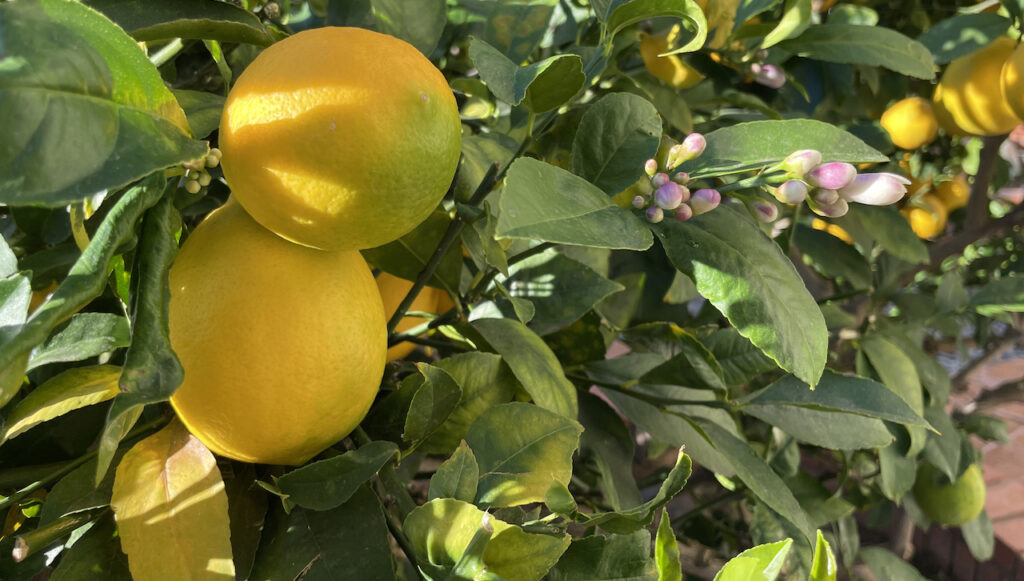today we’re exploring the world of the common yellow lemon, a staple in kitchens worldwide. Despite its ubiquity, the lemon’s journey from ancient China to our modern tables is shrouded in mystery. Known simply as “lemon” without reference to its color, this citrus fruit has a fascinating history and a myriad of uses in the culinary world.
1. Selecting the Perfect Lemon
When buying lemons, look for firmness and a smooth, mold-free surface. Thinner skins often indicate juicier flesh. Be aware that most yellow lemons are treated with anti-mold agents like diphenyl or thiabendazole, which should be indicated on the label. Untreated lemons are also available but have a shorter shelf life. Lemon products range from concentrated juice and frozen slices to lyophilized lemon powder and preserved lemons in salt or sugar.
2. Culinary Uses of Lemon
Lemon juice is a versatile ingredient in both savory and sweet dishes, often replacing vinegar in sauces. It’s essential for preventing oxidation in fruits and vegetables like apples, pears, artichokes, avocados, and Paris mushrooms. For easier juicing, roll the lemon under your palm before squeezing. Lemon zest, rich in essential oils, adds flavor to numerous dishes. Use zest from untreated lemons, or wash treated lemons thoroughly. Preserved lemons are key in Middle Eastern and North African cuisines. In pastry, lemon is used in tarts, sorbets, and candied forms. Buddha’s hand and citron are also used in salads and confections.
3. Storing Lemons
Store yellow lemons in a cool place or refrigerate at 4 °C, especially if they are untreated. Avoid stacking them to prevent mold.
4. Nutritional Value
Yellow lemons are rich in vital vitamin C, though regular consumption is needed to meet our high vitamin C needs. While many medicinal properties are attributed to lemons, not all have been scientifically verified, and some, like their detoxifying and weight-loss effects, are more myth than fact.
5. Lemon Varieties
Lemons are cultivated around the Mediterranean, in South America, and the United States (mainly California and Florida). Thanks to imports, they are available year-round.
Key varieties include:
- Eureka: The most widely cultivated, originating from California.
- Fino: Oval with a fine skin and very juicy pulp.
- Limoni invernale: Round with fine skin and juicy pulp
- Lisbon: Similar to Eureka but with a rougher, more aromatic skin.
- Verdelli: Less juicy and often artificially ripened.
- Verna: Seedless and well-colored.
- Menton Lemon: Cultivated in Menton, France, known for its fragrance.
- Meyer Lemon: A cross between a lemon and an orange or mandarin, known for its juicy and sweet flavor.
- Finger Lime: Long and slender with a dark green skin and caviar-like interior.
- Buddha’s Hand: Notable for its finger-like sections and thick skin.
- Yuzu: A hybrid of mandarin and lemon, highly aromatic, used in Japanese cuisine.
Conclusion: The lemon, in all its varieties, is more than just a basic kitchen ingredient. It’s a testament to the rich history and versatility of flavors that can be brought to our dishes. From preventing oxidation in fresh produce to enhancing the flavors of both sweet and savory dishes, the lemon is an indispensable part of culinary arts. So next time you hold a lemon, remember its journey from ancient China to your kitchen and the endless possibilities it holds. Bon appétit!
Enjoy some of the best lemon recipes on the website
Lemon lovers you are in the right place. You can discover on this website many tasty lemon based recipes. I’m sure you’ll enjoy the sweet and subtil taste of this fruit and its multiple versions. First you can try the traditional (but still excellent) lemon pie recipe or the exciting Lemon Shaped dessert . But feel free to make an search on the website to discover all of them.

